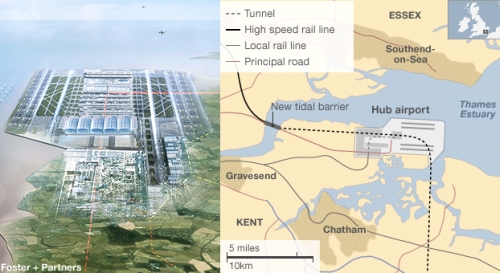23 JANUARY 2012
YOUR WORDS
Readers are invited to add their comments to any story. Click on the article to see and add.
BTN DISTRIBUTION
BTN also goes out by email every Sunday night at midnight (UK time). To view this edition click here.
- COMMENT: UK air transport – We have reached the crossroads!
- BIGGLES BIPLANE ON BBC TV
- Airbus A380 to Hong Kong
- ANA takes the 787 to Europe
- Boeing list prices
- British Airways upgrading 777-200s
- Case for Aviation by the Free Enterprise Group
- Civil Aviation Bill
- Emirates record ex-UK seats
- Flybe expands further
- Gibraltar Airport gets new terminal
- Heathrow’s Olympic Plans
- In-flight connectivity with Etihad Airways
- Luton Airport in development plans
- Oxford Airport daily to Jersey and the Isle of Man
- Route cancellations
- Travelodge expansion
- UK openings for DoubleTree by Hilton
- United States steps up tourism initiative
- Upper Class pepper set
- Virgin Australia launches Business Class (on most domestic routes)
- Westminster parking relief
- ON TOUR: The Maplin story
- REFLECTIONS FROM YOUR AVIATION LAWYER
- AND FINALLY: A reader and driving
The Business Travel News
PO Box 758
Edgware HA8 4QF
United Kingdom
info@btnews.co.uk
© 2022 Business Travel News Ltd.
Airbus A380 to Hong Kong
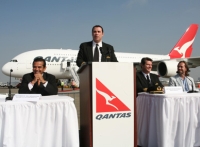 Qantas has launched A380 services between Australia and Hong Kong – making it the fourth A380 destination in the airline’s network. Flight time is just over nine hours in either direction. Qantas operates the A380s in a four-class configuration with First Class Suites on the main deck, plus Economy, and the top deck predominantly fully-flat Skybed sleeper seats in Business, plus at the back a small Premium Economy section with wide seats.
Qantas has launched A380 services between Australia and Hong Kong – making it the fourth A380 destination in the airline’s network. Flight time is just over nine hours in either direction. Qantas operates the A380s in a four-class configuration with First Class Suites on the main deck, plus Economy, and the top deck predominantly fully-flat Skybed sleeper seats in Business, plus at the back a small Premium Economy section with wide seats.
Qantas received its 11th and 12th A380s late last year, providing the additional capacity to support the Hong Kong services. The new aircraft have also enabled additional A380 flights between Melbourne and London (via Singapore) – up from six flights per week to daily – and between Melbourne and Los Angeles, up from four flights per week to daily.
The Qantas A380 schedule now includes daily services between: Sydney and London (via Singapore); Melbourne and London (via Singapore); Sydney and Los Angeles; Melbourne and Los Angeles; and four flights per week between Sydney and Hong Kong. www.qantas.com
British Airways upgrading 777-200s
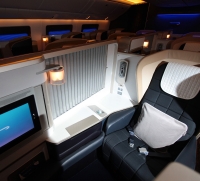
At British Airways maintenance base at Cardiff it takes engineers approximately a month, or 5,700 man-hours, to take out the old seats and interiors of the 777s and replace them with the very latest interior. Each aircraft has a staggering 13 kilometres of wiring removed and lightweight fibre optic cables installed to power the new entertainment system.
One particular and highly visible feature of the new cabins is the larger high-resolution video touchscreens. World Traveller passengers will be able to watch TV and films on 35% bigger offerings (now 8.9 inches); in World Traveller Plus they are 60% larger (now 10.6 inches); Club World widescreens increase by 16.3% (now 12.1 inches) while in First the screens increase by 27% (now 15.4 inches). The entertainment system offers over 700 hours of viewing, or 230 TV programmes, 70 films and 400 CDs. www.ba.com
Emirates record ex-UK seats
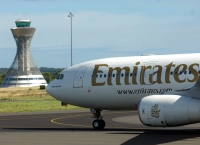
By early July the airline will have eight London departures daily (five from Heathrow, all Airbus A380s bar one), and three Boeing 777s from Gatwick); Birmingham will be two Boeing flights, whilst Manchester has a single A380 and two 777s. There is a single Newcastle non-stop Newcastle flight, serviced with an Airbus A330. Glasgow will be flown by a fuel frugal Boeing 777-300ER, the airline now operating an astonishing 64 in total, and a A340-300.
In the last financial year (until March) Emirates carried 31.4m passengers, making it the world’s seventh largest airline. It currently operates 20 A380s on flights from Dubai (in order of launch date) to Heathrow, Sydney, Auckland (via Sydney) Bangkok, Toronto, Paris, Seoul, Jeddah, Beijing, Manchester, Hong Kong, New York, Shanghai, Johannesburg, Munich, Rome and Kuala Lumpur. The Dubai to Jeddah route currently is the shortest route flown by the Airbus A380, taking approximately three hours. Melbourne, Moscow and Tokyo are expected to come on later this year. www.emirates.com
Heathrow’s Olympic Plans
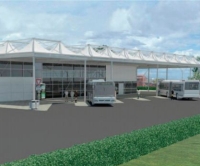
Executive jets, both private and government-owned have very limited access at Heathrow and are banned for the period of the games including Air Force One.
For the Olympics, Heathrow is expected to see an unprecedented increase in baggage throughput. Business people normally travel light, but athletes and their support staff have a reputation as ‘heavy’ clients. A spokesman for London also noted: “we want them to spend at the shops and take their goods home too!”
Olympians inbound will go through normal border controls but for departures Heathrow is building a temporary departure terminal and athletes can check in their luggage beforehand at the Olympic Village.
Put the following dates in your diary if you are a regular Heathrow traveller. 16 July – peak arrivals. 26 July – the day before the opening ceremony. 13 August – the day after the closing ceremony. www.heathrowairport.com
Oxford Airport daily to Jersey and the Isle of Man
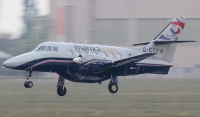 Manx2, the controversial Isle of Man virtual airline, is to introduce on 8 May daily services from Oxford Airport to both Jersey and the Isle of Man.
Manx2, the controversial Isle of Man virtual airline, is to introduce on 8 May daily services from Oxford Airport to both Jersey and the Isle of Man.
Created in 2006 by Noel Hayes, who had formerly run what is now Blue Islands airline in the Channel Islands, Manx2 is a travel operator who charters in licensed aircraft from various EU states to operate services. In February 2011 a Fairchild Metro aircraft, flying under the Manx2 banner, crashed at Cork Airport with six fatal casualties. The airline currently operates 15 routes including the Welsh Assembly backed service between Cardiff and Anglesey.
With its excellent location close by the M40 and regional major roads Oxford Airport is established as an important executive aviation airport and is now active in developing short haul regional services. It offers simple parking arrangements and an undemanding terminal facility with minimum walking and comfortable surroundings. www.manx2.com www.oxfordairport.co.uk
UK openings for DoubleTree by Hilton
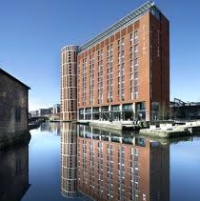 Two former Mint Hotels at Manchester and Leeds have become 14th and 15th UK hotels to join the DoubleTree by Hilton upscale, full-service brand and are now welcoming guests at Manchester-Piccadilly and Leeds City Centre.
Two former Mint Hotels at Manchester and Leeds have become 14th and 15th UK hotels to join the DoubleTree by Hilton upscale, full-service brand and are now welcoming guests at Manchester-Piccadilly and Leeds City Centre.
The openings come within weeks of the DoubleTree by Hilton London-Tower of London and DoubleTree by Hilton London-Westminster also rebranding from Mint.
The 285-room DoubleTree by Hilton Manchester-Piccadilly occupies a landmark site in the Piccadilly Place development. With an award-winning City Café, the stylish Piccadilly Lounge and elegant Blue Bar, the hotel offers guests a welcoming stay right at the heart of Manchester.
Overlooking the revitalised Leeds waterfront, the 333-room property is part of the architecturally renowned Granary Wharf area. Nestled between the working Leeds Liverpool canal and Leeds Railway Station, the hotel is ideally placed in the centre of Leeds, close to many cultural hotspots such as Opera North, Northern Ballet, Leeds Grand Theatre and the Victoria Quarter.
Both properties feature complimentary high-speed internet access throughout the hotel as well as in each guest room. Each also has extensive meetings and conferences facilities for up to 200 at Manchester and more than 300 guests in Leeds. www.doubletree.com
Virgin Australia launches Business Class (on most domestic routes)
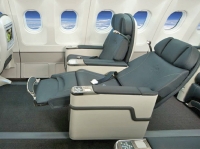 Much heralded Virgin Australia has introduced Business Class on most domestic routes across the country. The offering includes new premium cabins with luxury leather seating and generous recline, a gourmet food and beverage service, as well as complimentary access to Virgin Australia’s lounges and priority security screening, check-in and boarding. Various versions match the airline’s fleet of Airbus A330; Boeing 737 NG series and Embraer aircraft.
Much heralded Virgin Australia has introduced Business Class on most domestic routes across the country. The offering includes new premium cabins with luxury leather seating and generous recline, a gourmet food and beverage service, as well as complimentary access to Virgin Australia’s lounges and priority security screening, check-in and boarding. Various versions match the airline’s fleet of Airbus A330; Boeing 737 NG series and Embraer aircraft.
To develop the service, Virgin Australia assembled a group of experts in their fields to work closely with its team, including renowned chef Luke Mangan and acclaimed designer Hans Hulsbosch. Virgin Australia Group Executive of Commercial, Liz Savage, said: “Last year we announced our commitment to bringing competition to Business Class travel in Australia and today we have done just that, ahead of the return of business travellers in February. We are offering a premium product at very competitive prices.”
Business Class features include luxury leather seating with 62” seat pitch on the Airbus A330; and 38” seat pitch on the Boeing 737-800. From 15 May passengers will have on offer an Airbus A330 “Coast To Coast” service to include double daily Melbourne to Perth return flights. www.virginaustralia.com
REFLECTIONS FROM YOUR AVIATION LAWYER
This is the third in our series REFLECTIONS FROM YOUR AVIATION LAWYER sponsored by London headquartered practitioners Gates & Partners. Jeremy Robinson discusses, as he puts it “Between rhetoric and regulation”. The timing could not be better with the Government announcing plans for consultation on a new airport for London. His discourse is fascinating and demonstrates that Government is for the most part political and in no way commercial.
The main opponents of air transport are easy to spot because they say what they think: they espouse “fair” taxation (i.e. more taxes); less airport expansion; inclusion in the EU Emissions Trading Scheme, and more. Covert opponents tend to prevaricate, and use the twin weapons of double-speak and platitude. Amongst covert opponents of aviation we may count Government (in the UK, and in the EU). The problem with covert opposition is that it leads to bad regulation, either too extensive (in most cases), or too weak (in others).
Some legislation was introduced to serve one purpose (apparently) but has been converted into something very different, for example, APD (Air Passenger Duty), ETS (Emission trading scheme) and EU 261 (see below). Regulation frequently occupies more than its allotted territory, creating obligations and costs where none were thought to exist before. The clearest example has been how the European Commission and Court of Justice have interpreted and widened the scope of EU 261.
By contrast, the much-needed creation of a Europe-wide accident investigation system is still awaited. Equally, regulation operates stealthily, law by law, without considering how rules in one area create regulatory barriers to entry elsewhere, damaging the competitiveness of industry and consumer welfare.
This article focuses on the use and abuse of language: George Orwell argued that the English language was becoming “ugly and inaccurate because our thoughts are foolish, but the slovenliness of our language makes it easier for us to have foolish thoughts.” How true is that of aviation policy?
Championing consumer rights
EU 261 was introduced primarily to deal with overbooking practices by airlines. It has been transformed through legal interpretation into a general exercise in extending consumers’ rights in air transport. Other industries are not burdened in like degree. This broad regulation has created a false opposition between airlines’ and consumers’ interests, when in fact their interests are more often aligned: the extra cost of unintended (or at least, not openly intended) regulation is found in the higher cost of air transport, to the disadvantage of both consumers and airlines. Fares rise: those consumers who still fly must pay higher prices in return for their extra consumer rights (so there is a loss of consumer welfare, scarcely balanced by their extra rights); airlines face falling demand and run fewer services (so there is a loss of producer welfare). The only winners are those who oppose mass air transport.
When the EU 261 review began, the Commission warned industry that consumer rights, once granted, could not lightly be removed. Consider the language used by British politicians to describe consumers: they are “hard-working families” (a variation is the “hard-pressed” family: presumably they are related); the consumer must be “put first” in the regulatory hierarchy of values. But how do we reconcile the “right” of the “hard-pressed family” to their summer holiday with the fact that aviation regulation and taxes make them yet more hard-pressed to take those holidays? How can politicians then say that the aviation industry holds the “keys to economic growth”? Surely, in large measure, industry and the consumer will stand and fall together?
“I’m not anti-aviation. Far from it”
Overcrowding at airports (particularly in the South East of England) can be managed through reducing the demand for air travel, through efficient use of capacity, or through building more runways.
Opponents of air transport are clear that demand for air travel must be “managed” (i.e. reduced) and therefore, new runway or airport development should be stopped. Demand management tools (i.e. mechanisms to increase air fares for consumers) include taxation and, although not admitted to, increasing the regulatory costs for airlines. Opponents rely in part on concerns that mass aviation may harm our environment. The UK Government asserts that aviation growth and environmental protection can be reconciled, but do not say how.
Former Secretary of State Phillip Hammond said in June 2011:
“We…must work together to define a growth strategy for aviation that will support UK economic growth, but which will also support the delivery of our decarbonisation commitments.”
And:
“Ensuring we can lead the global debate and shape a low-emission aviation sector of the future, without disadvantaging UK airlines or UK airports.”
He then argues that, in promoting economic growth, whilst protecting the environment, it is necessary to ensure that other countries do not take advantage:
“We will continue to work with ICAO and the UN Framework Convention on Climate Change to push for international agreement on aviation emissions, ensuring that the playing field is level as quickly as possible.”
And:
“Our policy framework must support economic growth and protect Heathrow’s status as a global hub. But it must also address aviation’s effects on climate change and its impact on local communities. A tall order you might think.”
So, just in case we missed it last time:
“We will ensure the outcome is a positive and enduring policy framework that will deliver the benefits of a flourishing air transport sector, while also meeting our environmental goals.”
Mr Hammond acknowledged that the scrapping of the third runway was perceived by many as “loaded with hostile symbolism” but he assured us that “It was not” and that:
“I made clear at the earliest opportunity – and I want to do so again today – that this Government is not and at least, so long as I am Transport Secretary, will not be, ‘anti-aviation’. Far from it.”
His successor, Justine Greening, said on 19 October 2011:
“Willie [Walsh] and I have been on different sides of the aviation fence on this one, we both inhabit the same world of political reality.
And the political reality is that the runway decision has been made, it’s done. But let me also say this. The decision we took on the third runway does not make this Government anti-aviation.
And it certainly doesn’t make me anti-aviation. Far from it.”
And:
“I am certain we can improve and reform airport regulation and we can develop a new Aviation Strategy for the long term – one that supports economic growth while addressing the environmental impacts of airports and flying.”
“Because, when you have an economic engine as powerful as London’s then, for the sake of the entire national economy, you need to make sure it can fire on all cylinders. And that’s exactly what our policies are doing.”
On 31 October, Ms Greening noted that:
“The decision we took does not mean we are anti-aviation. This Transport Secretary and this Government are anything but.”
Finally, Ms Greening invites us to join together to devise:
“A better way to do strategy. One that empowers us to develop real world solutions to the real world challenges facing aviation.”
Is it possible to reconcile aviation and the environment? Ms Greening admits that this is:
“Incredibly hard.”
But:
“It’s possible…I believe it can be done.”
The UK Government pretends that this is a question of balance, but it is not. If mass air transport emits a high volume of polluting gases, then “balancing” aviation and the environment means that aviation and the environment are not in balance now, because environmental concerns are inadequately addressed. To be clear, the environmental objection to aviation is not merely that pollution will increase if the industry grows; it is that pollution still exists while the industry exists.
If one accepts this premise, then it is easier to justify existing taxes such as APD, devised originally (so we are told) as an “environmental” tax, as well as including aviation in the EU ETS. These must reduce the demand for air travel (not merely incentivise the operation of cleaner aircraft) if they are to be effective. So to reconcile aviation and the environment means (at a given level of technology) to reduce the amount of flying we do.
“Does that make me anti-aviation? Far from it” is at best wishful thinking; at worst, disingenuous.
The real obstacles
Proper regulation must address problems proportionately and adequately. If the EU’s approach to consumer rights is disproportionate, its approach to accident investigation is inadequate. Regulation 996/2010 concerns the investigation and prevention of accidents in civil aviation: plainly nothing is more important in civil aviation. The initial proposal was to create a European Civil Aviation Safety Authority. This was dropped in the final version.
Instead, Member States will continue to operate distinct systems, loosely woven together in a “Network” of Civil Aviation Safety Investigation Authorities.
This obscures the very different levels of sophistication, maturity and level of skill of the national Accident Investigation Boards. The Network itself has a role in “promoting the sharing of information useful for the improvement of aviation safety and actively promoting structured cooperation” between the various authorities. They must also promote best safety investigation practices “with a view to” developing a common Union safety investigation methodology and drawing up an inventory of such practices.
The phrase “with a view to” means that much remains to be done. It is true that the Regulation imposes onerous obligations on operators: for example, to assist victims of air accidents and their relatives; to have appropriate plans in place to include the psychological support of victims and their relatives; and to provide a validated passenger list within two hours of an incident. This is still not enough.
There is no standardisation of qualifications for accident investigators internationally nor adequate means to ensure proper continuing competence.
It is unclear whether the provisions of Regulation 996/2010 are adequately enforceable. In this area at least, further harmonisation, carefully prepared, and this time following full consultation with the industry, is urgently required.
Conclusion
Low-cost travel, affordable holidays to far-off destinations, intense competition between carriers: the consumer in Europe has benefitted enormously from liberalisation in the last 20 years.
This is all at risk.
The aviation sector has always operated on the margins of profitability, and this problem is exacerbated by the increasing regulatory burden. To begin to solve the problem, we need three things: a clear and objective basis for comparing the environmental merits of different forms of transport, to inform a balanced environmental policy. We need regulation that takes the industry as a whole, not in parts. Above all, we need honesty and clarity from governments about their aviation policies.
Jeremy Robinson
www.gatesandpartners.com
COMMENT: UK air transport – We have reached the crossroads!
It does seem to be that the Government has been galvanised into some sort of action regarding Britain’s current position as the hub of the world’s airline networks.
If “galvanised” is the right word.
Downing Street has recognised that an aviation policy is required and “off the record” we are being reminded that a consultative process is under way, the results due to be published at the end of March. The timetable then gives 12 months for discussion. That takes us up to March 2013. The next Election is due May 2015. Will Parliamentarians be more interested in their seats by then?
David Cameron is said to be supportive of London Mayor Boris Johnson's alternative to further developing Heathrow but will await the outcome of the consultation. The Lib Dems oppose airport expansion in south east England.
Let us hope that at last Mr Cameron has actually recognised that air transport is the engine room that makes everything else work. We cannot let the 21st century UK airport problem drag on any longer. In this issue of AERBT we learn the history of Maplin in ON TOUR. If the Prime Minister of the time (Harold Wilson in a minority government) had stuck to his guns we would not be in the mess we are now.
The problem is the publication of the consultation could just finish up as just another bureaucratic step.
Utterances by Boris last week resulted in a rush of support in some quarters and the opposite by others. However it was a paper published Friday by new (2010 intake) MP Kwasi Kwarteng, Conservative, that really caught the eye. Representing a constituency that certainly must be considered a Heathrow neighbour, Mr Kwarteng makes some valuable points. AERBT has summarised his discourse below (Case for Aviation by the Free Enterprise Group) but if your interest is as a traveller, a business person, or connected in some way with the industry, do take five minutes to read the piece. It’s a breath of fresh air in political terms.
We have reached the crossroads with air transport in the UK. Decisions must be made. And quickly too.
Malcolm Ginsberg
Editor in Chief
ANA takes the 787 to Europe
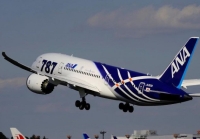 Last Saturday ANA introduced the Boeing 787 into European scheduled operations with a 12-hour non-stop flight from Tokyo Haneda to Frankfurt. Initially the airline will fly outbound from Frankfurt on Saturday, Monday and Thursday. To date ANA has taken delivery of five Dreamliners but expect to have 20 (out of 55) in service by the end of March 2013. With four aircraft operational it is the 787s first long haul route.
Last Saturday ANA introduced the Boeing 787 into European scheduled operations with a 12-hour non-stop flight from Tokyo Haneda to Frankfurt. Initially the airline will fly outbound from Frankfurt on Saturday, Monday and Thursday. To date ANA has taken delivery of five Dreamliners but expect to have 20 (out of 55) in service by the end of March 2013. With four aircraft operational it is the 787s first long haul route.
ANA also flies a daily Frankfurt service from Tokyo Narita using a Boeing 777-300ER for these flights.
The airline has announced that from April it will introduce two-class domestic 787s featuring a new lightweight seat which will give passengers more legroom. Other benefits of the new aircraft include much larger windows and an ergonomic cabin design. There are only two rows in Business Class, 12 seats. Up to 323 can be accommodated in the Economy zone. www.ana.co.jp
Case for Aviation by the Free Enterprise Group
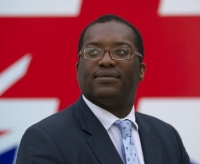 It is not often that an MP in the Heathrow catchment area either has an idea of what air transport is all about (and AERBT will not mention any names) or comes down in support of the airport. Kwasi Kwarteng is the Member of Parliament for Spelthorne. The Surrey Borough includes Ashford, Shepperton, Staines, Stanwell and Sunbury, all very close to the world’s busiest international aviation centre.
It is not often that an MP in the Heathrow catchment area either has an idea of what air transport is all about (and AERBT will not mention any names) or comes down in support of the airport. Kwasi Kwarteng is the Member of Parliament for Spelthorne. The Surrey Borough includes Ashford, Shepperton, Staines, Stanwell and Sunbury, all very close to the world’s busiest international aviation centre.
Of Ghanese background Kwasi Kwarteng gained entry to Westminster in the 2010 General Election. With a background of Eton and Trinity College Cambridge the articulate Mr Kwarteng has been described by a local paper as a “black Boris”.
Under the auspices of the “Free Enterprise Group” he has written a short 10-page document entitled “The Case for Aviation”, published last week. It is very well thought out and a politically neutral document. “Not in my backyard” does not seem to carry weight with Mr Kwarteng. “The industry needs a more flexible planning system. Decisions should be made by the price mechanism and free competition rather than special interests and political grandstanding. There should be a presumption in favour of development," he says. www.freeenterprise.org.uk
Flybe expands further
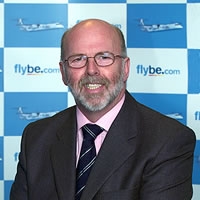 Claiming to be Europe’s largest regional airline and the UK’s number one domestic airline, Flybe will operate an additional six brand new routes from the start of the summer season. Based in Exeter the carrier, which includes as a minority shareholder British Airways, offers a total of 208 routes across its network. The airline's share price seems to have steadied at around 60p (from a high of £3.45).
Claiming to be Europe’s largest regional airline and the UK’s number one domestic airline, Flybe will operate an additional six brand new routes from the start of the summer season. Based in Exeter the carrier, which includes as a minority shareholder British Airways, offers a total of 208 routes across its network. The airline's share price seems to have steadied at around 60p (from a high of £3.45).
The new routes are Newcastle to Newquay and Bergen (Norway); Belfast City to Newquay; to Knock and Waterford from Leeds and Birmingham respectively, and from Southampton to Tours in France.
The six additional new routes have been chosen so that both leisure and business travellers have a wide variety of travel options available to them and, in the case of the Newcastle – Bergen route, reinstates a much-awaited link between the two twinned cities. They follow hot on the heels of the announcement of Flybe’s new route between Newquay and Norwich and its franchise partner Loganair’s four new flights out of Norwich to Exeter, the Isle of Man, Manchester and Southampton. www.flybe.com
In-flight connectivity with Etihad Airways
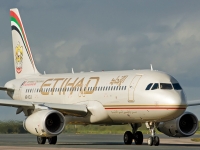
On the A320, passengers will have full connectivity, enabling them to use their own mobile phones and Smartphones to make and receive phone-calls, send and receive text messages and emails, and access mobile data services. The A320 is used primarily for short haul routes throughout the Middle East, and some mid-length routes including Athens, Cochin, Bangalore, Istanbul, Minsk, and Mahé in the Seychelles. The A330-300s are used for long haul destinations across the network, including Casablanca, Frankfurt, Geneva, London, Paris and Seoul.
Peter Baumgartner, Etihad Airways Chief Commercial Officer, said: “The modern traveller is increasingly reliant on mobile devices and the internet, not only to plan travel, but also to stay in touch throughout their journey. The introduction of these connectivity-enabled aircraft is an exciting first step in Etihad Airways’ long-term strategy to offer in-flight connectivity solutions across our entire fleet of passenger aircraft.” www.etihad.com
Route cancellations
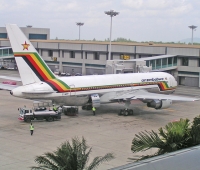 Airlines are looking even more closely than ever regarding future route planning and cancellations, and are often loath to tell prospective passengers and the travel trade (and hence the media). Information from AERBT readers is much appreciated. info@aerbt.co.uk
Airlines are looking even more closely than ever regarding future route planning and cancellations, and are often loath to tell prospective passengers and the travel trade (and hence the media). Information from AERBT readers is much appreciated. info@aerbt.co.uk
Hong Kong Airlines has cancelled its Moscow Sheremetyevo service. There were indications that this route would return for the summer schedule but it is not listed. China Airlines effective 25 March will drop its twice weekly Taipei – Heathrow route and are offering a codeshare with KLM. American Airlines is cancelling its Chicago – New Delhi operation also from the same date. Other long haul routes being stopped include Etihad Airways Abu Dhabi to Cape Town via Johannesburg. Delta Air Lines has announced that it will be suspending its Atlanta – Shanghai, and Lufthansa Frankfurt – Guangzhou.
Air Zimbabwe has suspended its Harare – Gatwick flights effective immediately. One of the airline's Boeing 767-200s was impounded at Gatwick recently over unpaid debts. Also in the UK, KLM is dropping the three times daily Liverpool – Amsterdam route from the end of the winter season.
Waving good-bye to its Slovak part, CSA Czech Airlines has closed down its short-lived Bratislava base and stopped, with immediate effect, services to Amsterdam, Larnaca and Paris. www.oag.com
United States steps up tourism initiative
 Under an Executive Order, signed by President Obama, the United States is to significantly step up initiatives to increase inbound tourism. It is part of a US job creation scheme. A Task Force, currently named BrandUSA, is being created to co-ordinate efforts.
Under an Executive Order, signed by President Obama, the United States is to significantly step up initiatives to increase inbound tourism. It is part of a US job creation scheme. A Task Force, currently named BrandUSA, is being created to co-ordinate efforts.
According to official government figures the number of travellers from emerging economies with growing middle classes – such as China, Brazil and India – is projected to grow by 135%, 274%, and 50% respectively by 2016 when compared to 2010. Nationals from these three countries contributed approximately US$15bn and thousands of jobs to the US economy in 2010. In addition, Chinese and Brazilian tourists currently spend more than US$6,000 and US$5,000 respectively each, per trip.
The American initiative will be keenly watched by other countries greatly dependent on travel and tourism and will look towards the same for their own inbound growth. In the 2011 fiscal year, consular officers adjudicated more than a million visa applications in China and more than 800,000 in Brazil, representing 34% growth in China and 42% for Brazil. www.thebrandusa.com
Westminster parking relief
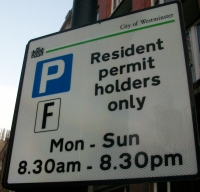 Visitors to London, residents, and businesses involved with evening commerce, will be pleased to learn that Westminster City Council, responsible for roads in much of the central area, have backed down on plans to charge for street parking on a 24-hour basis. Under current legislation vehicles can park for free on single yellow lines from 18:30 in the evening onwards Monday to Friday, and at certain times (depending on location) at the weekends. This will now continue.
Visitors to London, residents, and businesses involved with evening commerce, will be pleased to learn that Westminster City Council, responsible for roads in much of the central area, have backed down on plans to charge for street parking on a 24-hour basis. Under current legislation vehicles can park for free on single yellow lines from 18:30 in the evening onwards Monday to Friday, and at certain times (depending on location) at the weekends. This will now continue.
A campaign, spearheaded by the London Evening Standard has resulted in this change of policy. Colin Barrow, Chairman of Westminster Council, has resigned. However in what the newspaper calls a “stealth campaign” the Council has implemented a massive increase in the number of double yellow lines, where parking is banned. This is likely to be challenged by not only the publication but businesses and workers in the area. www.westminster.gov.uk/services/transportandstreets/parking
AND FINALLY: A reader and driving
The following has been sent in – unsigned.
I would like to share with you all an experience that I recently had regarding drinking and driving.
As you would know, most of us have had brushes with the law on our way home before.
Well, I for one have done something about it.
The other night I was out for dinner and a few drinks with some friends.
Having had a few too many wines and knowing full well I was struggling, I did something I've never done before. I took a bus home.
I arrived home safely and without incident, which was a real surprise as I have never driven a bus before.
The editor would like to disown this AND FINALLY
BIGGLES BIPLANE ON BBC TV
19:30 Monday 23 January 2012
BBC East ‘Inside Out’
The story of the six-year-long restoration of the “Biggles Biplane” Royal Aircraft Factory BE-2 replica will be broadcast on Monday, 23 January, at 19:30. It will form part of the BBC ‘Inside Out’ programme in the BBC East region and may be shown in other areas too as well as being available on i-Player. www.biggles-biplane.com
Boeing list prices
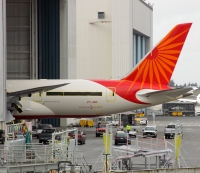 Fancy an Airbus A380 for your personal transport? “That will be $389.9m sir.” Plus or minus, after deciding how you want the interior to be fitted out. There might be some discount too, it being very unlikely that Emirates paid that price when buying 100 copies.
Fancy an Airbus A380 for your personal transport? “That will be $389.9m sir.” Plus or minus, after deciding how you want the interior to be fitted out. There might be some discount too, it being very unlikely that Emirates paid that price when buying 100 copies.
The problem is that Boeing is embarrassed. Air India’s accounts became public last week with the airline noting that it paid just under US$110m for its first 787. The list price, available on the internet, is US$193m. Special bank loans can reduce the final fee to as little as US$95m with engines.
Airbus has published its 2012 prices. John Leahy, Airbus Chief Operating Officer, Customers, says that this represents a price increase of 3.9% except for the A320Neo Family which rises by an average of 6.1%.
According to Airbus an A318 comes in at US$67.8m, A320Neo US$96.7m, A330-300 US$231m and A350-1000 at US$320.6. Or you can buy a large cruise ship for much the same money. www.boeing.com/commercial/prices www.airbus.com
Civil Aviation Bill
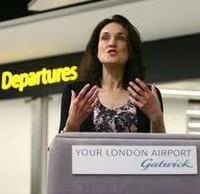 Last week Aviation Minister Theresa Villiers introduced a Civil Aviation Bill into Parliament. It will be fully debated on 30 January. Villiers said the wider powers in the Bill “will put the needs of passengers unambiguously at the heart of how our major airports are run.” Under the new rules, the CAA (Civil Aviation Authority) will be able to intervene much more quickly when an airport is failing passengers, for example on winter preparedness.
Last week Aviation Minister Theresa Villiers introduced a Civil Aviation Bill into Parliament. It will be fully debated on 30 January. Villiers said the wider powers in the Bill “will put the needs of passengers unambiguously at the heart of how our major airports are run.” Under the new rules, the CAA (Civil Aviation Authority) will be able to intervene much more quickly when an airport is failing passengers, for example on winter preparedness.
The core of the legislation redefines the role of the regulator, the CAA, giving it a single primary duty to promote the interests of passengers – as opposed to all airport users as is the case now.
The CAA will also become responsible for overseeing aviation security, although the Government will retain control of security policy. However its cost will be transferred from the Treasury to the aviation sector.
One important clause in the Bill proposes to bring holidays sold by airlines into the ATOL (Air Travel Organisers' Licensing) insurance scheme, an idea supported by ABTA.
A Department for Transport statement on the full range of ATOL reform proposals is expected within days. www.dft.gov.uk
Gibraltar Airport gets new terminal
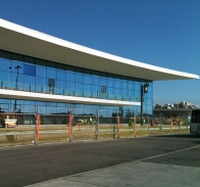 Just before Christmas Gibraltar finally, but only partially, opened its new air terminal. The event virtually coincided with a change of government, the new Alliance group, perhaps taking a leaf out of Westminster, questioning the project and the continuing work on the road approach and tunnel under the single runway.
Just before Christmas Gibraltar finally, but only partially, opened its new air terminal. The event virtually coincided with a change of government, the new Alliance group, perhaps taking a leaf out of Westminster, questioning the project and the continuing work on the road approach and tunnel under the single runway.
The new, and old terminals, sit on a small piece of land between the runway and Spain. Presently travellers are not only held up when crossing the border, depending on the Spanish mood, but also for landings and take offs.
Presently the (380,000 sq ft) new structure is only being used for arrivals with two carousels working, those bound for Spain having to personally take their luggage across the border. Under an agreement signed in 2006 a common gateway was to be created but mainly due to Spanish intransience (and lack of money) this has failed to be implemented.
The outdated existing building is still being used for departures with completion of the new facility planned for May. It could easily cater for one million passengers annually. Throughput for the year up to November 2011 was just under 360,000, the final figure likely to top the cira 369,000 for both 2008 and 2009. www.gibnet.com
Luton Airport in development plans
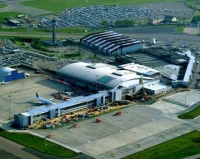 With the publication of a dedicated website setting out its plans for the future London Luton Airport Ltd (LLAL) says that it sees a finite airport capacity of 18m passengers per year using the existing runway. This is about twice the present throughput estimated at 9.6m for 2012. A consultation process will run until 5 March and will include a series of public exhibitions around the region.
With the publication of a dedicated website setting out its plans for the future London Luton Airport Ltd (LLAL) says that it sees a finite airport capacity of 18m passengers per year using the existing runway. This is about twice the present throughput estimated at 9.6m for 2012. A consultation process will run until 5 March and will include a series of public exhibitions around the region.
The project seeks to optimise the capacity of the existing airport and LLAL will consider what modifications and improvements will be required. This will include consideration of areas including the aircraft taxiways, aprons, piers and parking stands, the road network, airport car parking and the passenger terminal.
A previous scheme for a new runway has been dropped but the airport’s location, close by the M1 and current West Coast rail line still makes it a possible contender as the future lead London gateway. However plans for a motorway style link and rail connection to the A1 and East Coast train system have also been seemingly discarded.
In 1998 Luton Borough Council entered into a 30-year management agreement with the Spanish company Abteris. There is a one-off opportunity for termination by April 2014. www.futureluton.co.uk
Travelodge expansion
 Claimed to be the UK’s fastest growing hotel company, Travelodge will open 41 hotels (3,610 rooms) this year. These new properties, at an investment of £246m, will boost the company’s estate to 537 hotels and over 39,000 rooms.
Claimed to be the UK’s fastest growing hotel company, Travelodge will open 41 hotels (3,610 rooms) this year. These new properties, at an investment of £246m, will boost the company’s estate to 537 hotels and over 39,000 rooms.
Eleven of the 41 new Travelodges are located in London – further cementing the company’s position as the largest hotelier in the capital. Included in these openings is Travelodge’s 500th hotel at Stratford which is scheduled to be unveiled this February. Half of these London properties will be open before the end of July, including London Greenwich and London Excel Centre.
Guy Parsons, Travelodge Chief Executive, said: “The demand for good quality budget accommodations is growing at such pace across the country, that we have added 146 new UK locations to our target requirements list. Therefore we can build more hotels in the locations where consumers need them.
Our ability to raise finance means that we are able to move quickly when other companies remain strangled by red tape. This, coupled with our ability to be flexible and innovative in terms of the development schemes we can undertake, ensures we are in a very strong position to achieve our growth target of having 1,000 hotels by 2020.” www.travelodge.co.uk
Upper Class pepper set
 Virgin Atlantic has now replaced its “highly collectable” salt and pepper sets in the Upper Class cabin. The previous pieces became so sought after they are appearing on eBay for up to £20 each. But the new replacement pots are not to be stolen. To ensure the pots are not pinched, cabin crew have been instructed to collect the new shakers after each meal service.
Virgin Atlantic has now replaced its “highly collectable” salt and pepper sets in the Upper Class cabin. The previous pieces became so sought after they are appearing on eBay for up to £20 each. But the new replacement pots are not to be stolen. To ensure the pots are not pinched, cabin crew have been instructed to collect the new shakers after each meal service.
The brand new sets, which are sure to be a crowd pleaser, have been inspired by a classic cocktail shaker.
Made of chrome and 66mm tall, it snaps apart to become an individual salt and pepper shaker.
Said Virgin Atlantic spokeswoman, Janine Doy: “Thousands of the previous coveted condiments were pinched over the past 12 years but we are guarding their replacements closely. We had no idea how popular our old salt and pepper pots had become – but we hope the new ones will be just as popular.”
Virgin says that the new shakers are the result of the company’s policy to use unique, bespoke designs to make everything in a Virgin aircraft look and feel special, compared to what the carrier terms is “mass produced items used by rival airlines.” www.virginatlantic.com
ON TOUR: The Maplin story
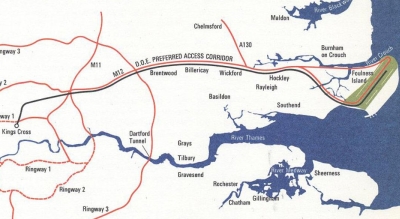 Airports in the Thames estuary are nothing new. They were headline news 40 years ago. David Hurst, these days an aviation consultant, was a young press officer with the British Airports Authority at the time. He now delves into the memory (and archives).
Airports in the Thames estuary are nothing new. They were headline news 40 years ago. David Hurst, these days an aviation consultant, was a young press officer with the British Airports Authority at the time. He now delves into the memory (and archives).
Much of the detail comes from government papers in the National Archives plus the annual reports of British Airports Authority and Port of London Authority (PLA). The name did not change to BAA Plc until privatisation in 1988. The 2011 statistics are those of the Civil Aviation Authority (CAA). Current fuel price is from the International Air Transport Association (IATA) website. There are no surviving archives from the British Airports Authority predecessor to BAA Ltd. PLA archives are in the Docklands Museum though their Maplin boxes have not been consulted and are unsorted.
Forty years ago the papers were full of stories about the need for the third London airport. Airport capacity is still news and the Thames estuary is again being looked at as the solution.
Back in 1970 the stories largely resulted from the opinion of the late Sir Peter Masefield (died 2004 aged 91), a lifelong civil aviation businessman, who, depending on your point of view, was either a far-sighted visionary or simply got his figures wrong.
It was Sir Peter's opinion that Heathrow and Gatwick would run out of capacity during the 1980s unless something was done. He was only incorrect in that more breathing space was wrung out of the system but maybe the crunch is happening now.
The worldwide civil aviation business has grown at an average 5% a year since the 1950s and continues to do so. There are occasional recessions and wars which can delay the effects for a year or two but the trend is clear.
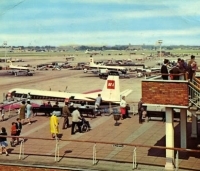 After the end of World War II the major UK civil airports were directly run by Ministry of Aviation. In 1966 Heathrow, Gatwick, Stansted and Prestwick were grouped together to be run by a separate organisation, the British Airports Authority, under the chairmanship of the then Peter Masefield. Edinburgh, Glasgow and Aberdeen airports were added later. Southampton joined much later. Masefield was convinced that the third London airport should be Stansted, then a small public airport with a large runway built for the American air force.
After the end of World War II the major UK civil airports were directly run by Ministry of Aviation. In 1966 Heathrow, Gatwick, Stansted and Prestwick were grouped together to be run by a separate organisation, the British Airports Authority, under the chairmanship of the then Peter Masefield. Edinburgh, Glasgow and Aberdeen airports were added later. Southampton joined much later. Masefield was convinced that the third London airport should be Stansted, then a small public airport with a large runway built for the American air force.
Continuous controversy resulted in the Roskill Commission which was to consider all possible sites. Roskill gave the government a choice of four: Cublington – not a million miles from the current HS2 track in Buckinghamshire; Nuthampstead, Hertfordshire; Thurleigh, Essex, and Foulness, later called Maplin for obvious reasons after sands slightly further south, but still north of the Thames in Essex.
The Commission plumped for Cublington following a detailed cost/benefit analysis. There was a dissenting opinion by the transport planner Sir Colin Buchanan who favoured Maplin.
Maplin
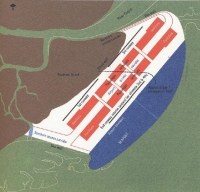 Edward Heath’s Conservative government decided to back the Maplin option. Detailed studies had quietly started in July 1971 and on 28 September 1972, the first meeting of the confidential Maplin Project Management Committee was held under the auspices of the Department of the Environment to co-ordinate the work.
Edward Heath’s Conservative government decided to back the Maplin option. Detailed studies had quietly started in July 1971 and on 28 September 1972, the first meeting of the confidential Maplin Project Management Committee was held under the auspices of the Department of the Environment to co-ordinate the work.
A wide range of studies were commissioned but a major obstacle was seen as the moving of the military firing range from Shoeburyness, east of Southend and clearing the site of projectiles. The Ministry of Defence were less than enthusiastic but eventually a civilian workforce of some 200 people were engaged on the clearance work. The likely location of the replacement range was Tain in Scotland.
It was decided that it was only necessary to clear the sands to a depth of 1.5 metres as tests on Concorde and VC10 aircraft had optimistically shown that, with concrete and the fill on top of the sand, the vibrations of landing were unlikely to disturb anything that had penetrated further down. The Boeing 747, just entering service, let alone the undreamed-of Airbus A380, were not mentioned.
The Maplin Development Authority, tasked with reclaiming the 30 square miles of land required for the new airport and sea port, held its first official meeting on 6 November 1973. The Chairman, Sir Frank Marshall, said in his only annual report that the investigations had indicated that it was ‘an area exceptionally suitable for reclamation at a lower cost than was previously envisaged’. The Dutch were particularly helpful with their experience in such matters.
Once the land was reclaimed it was to be handed to the British Airports Authority to construct the airport and to the Port of London Authority (PLA) to build the accompanying sea port.
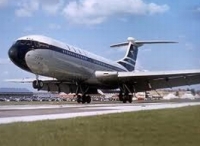 Norman Payne, then Chief Executive of the British Airports Authority, announced broad plans for the airport in March 1973. When it opened, it would have a single runway and one terminal but, by the late 1990s, the plan was for four runways, each of 4,250 metres, and 10 terminals arranged as a spine between the runways.
Norman Payne, then Chief Executive of the British Airports Authority, announced broad plans for the airport in March 1973. When it opened, it would have a single runway and one terminal but, by the late 1990s, the plan was for four runways, each of 4,250 metres, and 10 terminals arranged as a spine between the runways.
Access would be by a non-stop rail service from Kings Cross, taking just 40 minutes. There would be a motorway link from the planned London Ringway (subsequently abandoned but parts would become the M25) and both the road and the railway would enter the spine of the airport from the south and later continue from the north end of the site. The airport would handle 32m passengers annually by 1986 and 120m when completed in the late 1990s.
Cost estimates at the time produced figures of around £1,000m for the entire project, including urbanisation, by the 1990s.
Aircraft would approach and depart entirely over the sea. There would be 400 houses within the 35NNI noise contour as opposed to 250,000 at Heathrow.
The PLA had identified the potential of Maplin a decade earlier and had extended its area of responsibility to include the site. It had seen the need for a major deep-water container port and a terminal for super-tankers and was eager to start construction. The reclaiming of 30 square miles at Maplin was just part of its broad plans to reclaim some 300 square miles along the Thames estuary.
Problems
Problems arose in October 1973. As a result of the Arab-Israeli Yom Kippur war, the price of crude oil soared from US$3 a barrel to US$12 (or US$60 at 2011 prices – today’s price is around US$129 a barrel). By March 1974, petrol prices at the pump had risen 70% and the first fuel crisis was in full swing.
In February 1974 there was a general election which resulted in a hung parliament with Labour forming a minority government under Harold Wilson. Various reviews were undertaken and on 8 May 1974, the Department of the Environment wrote to the Maplin Development Authority instructing them not to incur further costs and to plan to shut down by 30 June. The Cabinet confirmed the cancellation at their meeting on 16 July 1974.
Curiously the sea port was not mentioned in the cancellation and even in 1976 the PLA was still hoping that it could be developed.
And what if it had happened?
If Maplin had gone ahead, what would have been the consequences?
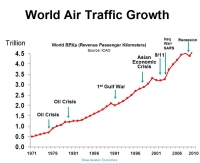 First, Stansted and Southend airports would have closed completely and would probably have been turned over for housing or industrial estates. Development of Luton airport would have been curtailed and much of its traffic would have moved elsewhere. Manston would probably have shut when the RAF moved out. Development at Heathrow would have stopped at three terminals and two runways and Gatwick would have remained with a single terminal and one runway. Their aircraft movements would be capped at 1980 levels.
First, Stansted and Southend airports would have closed completely and would probably have been turned over for housing or industrial estates. Development of Luton airport would have been curtailed and much of its traffic would have moved elsewhere. Manston would probably have shut when the RAF moved out. Development at Heathrow would have stopped at three terminals and two runways and Gatwick would have remained with a single terminal and one runway. Their aircraft movements would be capped at 1980 levels.
In 1980 Heathrow handled 294,619 aircraft movements (479,100 in 2011); Gatwick reached 143,522 (246,600 in 2011). West London and north Sussex would have been around 40% quieter now.
With a major seaport at Maplin, Felixstowe docks would not have happened, and port development on the Thames estuary may have been different.
One could surmise that London’s development towards the east would have happened sooner and, without the major airport expansion at Heathrow, there might have been less urban growth in west London and along the M4 corridor as well as the Crawley/Burgess Hill area. East Anglia would have seen much more progress, especially in Essex. By the 1990s the staffing requirement may well have topped 60,000.
The significant question is whether the airlines would have used Maplin? Moving the infrastructure of a home base is hugely complex so UK airlines would have faced serious decisions. Overseas carriers rarely consider a particular route more than a season or two ahead so they are more flexible – note how quickly current low-cost airlines start-up and stop services. However, the large scheduled carriers prefer to work on the honeypot principle and swarm in one place even if facilities are better elsewhere.
Alternatively, airlines will always go where they think they can make money. If there is enough traffic, someone will operate an air service.
In the 1970s the government was enthusiastically interfering in business decisions. After the cancellation of Maplin it attempted to move all the Canadian and the Iberian air traffic, including British Airways, from Heathrow to Gatwick. That was only avoided by a general election. It did insist any new airline wanting to serve London should use Gatwick and not Heathrow, just at the time US airlines were expanding into Europe. Today, those airlines have disappeared or squeezed into Heathrow and there are now few major overseas scheduled carriers serving either Gatwick or Stansted.
The panic caused by the escalating oil price rise did not last. Air passenger figures for the London area peaked at 29.41m in 1973, dropped by two million in 1974 and were back at 31.03m in 1976. In 2011 the six London area airports handled a total of 133.62m, nearly 14m more than the planned capacity of the completed Maplin.
David Hurst davidhurstassocs@aol.com
